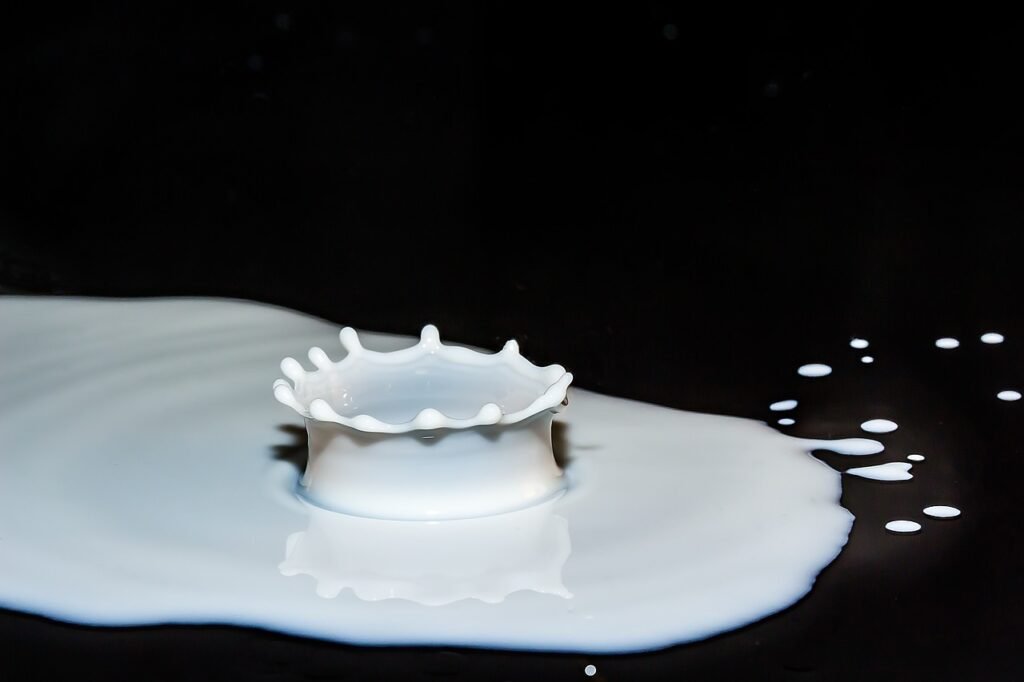Have you ever wondered if being organized can actually enhance your creativity and innovation? It may seem counterintuitive, but studies have shown that having a well-structured and organized environment can actually stimulate your imagination and boost your ability to generate new ideas. In this article, we will explore the fascinating connection between organization and creativity, uncovering the ways in which tidiness and orderliness can positively impact your innovative thinking. So, if you’re looking for a way to unleash your creativity, keep reading to discover the surprising benefits of being organized.

The Relationship Between Organization and Creativity
Understanding Organization
Organization refers to the arrangement and structuring of various elements or components in a systematic and orderly manner. It involves managing resources, tasks, and information in such a way that they are easily accessible and can be efficiently utilized. By creating a sense of order and structure, organization helps individuals to prioritize their work, manage their time effectively, and streamline their workflow.
Defining Creativity
Creativity, on the other hand, is the ability to generate original and valuable ideas or solutions. It is the process of thinking outside the box, breaking traditional patterns, and exploring new possibilities. Creativity encompasses various domains, including art, science, business, and technology, and is often associated with innovation and problem-solving.
Exploring the Link between Organization and Creativity
While organization and creativity may seem like contrasting concepts, they are more closely intertwined than one might initially think. Being organized can provide a solid foundation for creativity to flourish and can enhance the overall creative process. It is important to understand how organization and creativity interact and complement each other in order to harness their full potential.
Benefits of Being Organized for Creativity
Enhanced Focus and Productivity
When you have an organized environment, both physically and digitally, you minimize distractions and create a space conducive to creativity. A clutter-free workspace can improve your focus, allowing you to dedicate your full attention to the creative task at hand. Furthermore, by organizing your tasks and setting clear priorities, you can increase your productivity and accomplish more within a given timeframe.
Reduced Mental Clutter
Mental clutter refers to the overwhelming amount of thoughts and information that can occupy your mind. When your mind is cluttered, it becomes difficult to think clearly and creatively. By practicing organization, such as utilizing to-do lists or implementing digital tools for note-taking and task management, you can externalize your thoughts and free up mental space for creative thinking.
Efficient Time Management
Time management is crucial for effective creativity. When you are organized, you are better able to allocate your time and resources to different creative activities. By setting realistic deadlines, breaking tasks into smaller manageable chunks, and prioritizing your work, you can ensure that you have enough time to explore new ideas, experiment, and refine your creative endeavors.
Better Utilization of Resources
Being organized allows you to optimize the use of available resources, including materials, tools, and information. When your resources are well-organized and easily accessible, you can spend less time searching for what you need and more time utilizing them creatively. This not only saves time but also enables you to make the most of your resources and unlock new possibilities for innovation.
Improved Workflow and Collaboration
Organization promotes smooth workflow and efficient collaboration, which are essential for creative projects involving multiple individuals or teams. By establishing clear processes, documenting progress, and clarifying roles and responsibilities, you can reduce confusion and conflicts, and promote a collaborative environment. This enables ideas and inspiration to flow freely, fostering creativity and innovation within teams.
How Organization Facilitates Innovation
Clear Goal Setting
One key aspect of organization is setting clear goals. When you have a well-defined objective, it becomes easier to channel your creative energy towards achieving it. Clear goals provide direction and purpose, and help you focus your creative efforts on specific outcomes. By setting goals that are challenging yet attainable, you can stimulate innovation and push the boundaries of creativity.
Structured Problem-Solving
Creativity often involves solving complex problems and overcoming obstacles. Organization can provide a structured approach to problem-solving, allowing you to break down problems into smaller, more manageable parts. This enables you to analyze the problem from different angles, explore multiple solutions, and systematically evaluate their feasibility and effectiveness. By approaching problem-solving in an organized manner, you can enhance your creative thinking and find innovative solutions.
Effective Brainstorming
Brainstorming is a popular technique for generating ideas and stimulating creativity. However, without proper organization, brainstorming sessions can often become unstructured and chaotic, leading to a lack of focus and direction. By implementing organizational techniques such as creating an agenda, setting ground rules, and assigning a facilitator, you can ensure that brainstorming sessions are productive and yield valuable ideas. Organized brainstorming sessions foster collaboration, inspire creative thinking, and maximize the potential for innovation.
Optimized Decision-Making
Innovation often involves making critical decisions that can have a significant impact on the outcome. Being organized can facilitate decision-making by providing a structured framework for evaluating options, weighing pros and cons, and considering various factors. By organizing information, conducting thorough research, and involving relevant stakeholders, you can make informed decisions that are more likely to lead to innovative solutions.
Streamlined Project Management
Organizational skills are particularly valuable when managing creative projects from start to finish. By breaking down projects into smaller tasks, setting deadlines, and assigning responsibilities, you can ensure that each stage of the project progresses smoothly. By organizing project timelines, resources, and communication channels, you can minimize bottlenecks, enhance collaboration, and foster an environment that nurtures creativity and innovation.
Practical Tips to Incorporate Organization into the Creative Process
Establishing a Productive Workspace
Create a dedicated workspace that is clean, organized, and free from distractions. Eliminate physical clutter by getting rid of unnecessary items and arranging essential tools and materials in a logical manner. Personalize your workspace to reflect your creative personality, incorporating elements that inspire and motivate you. An organized and inviting workspace can significantly enhance your creativity and productivity.
Developing Effective Systems and Processes
Devise systems and processes that align with your creative workflow. Establish a routine that incorporates regular creative time and establishes clear boundaries between work, leisure, and rest. Create a system for organizing digital files, project notes, and reference materials to ensure easy access and retrieval. By developing efficient systems and workflows, you can streamline your creative process and increase your overall efficiency.
Utilizing Digital Tools and Apps
Leverage the power of digital tools and apps to enhance your organization and creativity. There are numerous tools available that can help you manage tasks, brainstorm ideas, and collaborate with others. From project management apps to note-taking tools and creative software, explore and utilize the tools that best align with your creative process. Digital tools can assist in organizing your thoughts, facilitating collaboration, and boosting creativity.
Implementing Time-Blocking Techniques
Time-blocking is a technique where you allocate specific time slots for different activities or tasks. By planning your day in advance and dedicating focused blocks of time to creative work, you can avoid getting overwhelmed and ensure that you have sufficient time to nurture your creativity. Time-blocking helps create a sense of structure, enhances productivity, and enables you to make progress on creative projects consistently.
Maintaining Regular Cleaning and Decluttering
Make cleaning and decluttering a regular part of your creative process. Take some time to declutter your workspace, digital files, and creative materials. Remove any unnecessary distractions or items that no longer serve a purpose. Regular cleaning and decluttering promote a sense of renewal and freshness, allowing for a clearer mind and a more conducive environment for creativity and innovation.

Challenges and Solutions in Balancing Organization and Creativity
Avoiding Over-Planning and Stifling Creativity
One challenge in balancing organization and creativity is the risk of over-planning and stifling spontaneous creative ideas. To overcome this, it is important to strike a balance between structure and flexibility. Maintain a flexible mindset, open to unexpected ideas and creative detours. Allow room for improvisation and exploration, even within an organized framework.
Embracing Flexibility within Organizational Systems
Organizational systems should not be rigid or restrictive. It is important to design systems that allow for flexibility and adaptability. This can be achieved by incorporating feedback loops and regular checkpoints within the system. By regularly evaluating and adjusting your organizational systems, you can ensure that they continue to support and nurture your creativity.
Finding the Right Balance between Chaos and Structure
Balancing chaos and structure is a delicate process. While too much chaos can lead to disorganization and overwhelm, excessive structure may stifle creativity. It is essential to find the sweet spot where structure provides a solid foundation, while leaving enough room for creative exploration and serendipity. Experiment and iterate to find the balance that works best for you.
Adapting Organizational Strategies to Different Creative Fields
Different creative fields may require different approaches to organization. What works for a visual artist may not be suitable for a software developer. It is important to adapt organizational strategies to fit the unique needs of your creative field. Stay open-minded, learn from others in your field, and experiment with different organizational techniques to find what resonates with you.
Case Studies: Successful Organizations that Foster Creativity
Google’s 20 Percent Time Policy
Google’s 20 Percent Time policy allowed employees to dedicate 20% of their work time to pursue personal projects and creative ideas. This policy fostered a culture of innovation and creativity, resulting in the development of groundbreaking products such as Gmail and Google Maps. By providing dedicated time and resources for creative pursuits, Google empowered its employees to think creatively and drive innovation within the organization.
Pixar’s Effective Creative Environment
Pixar, known for its exceptional creativity and animated masterpieces, has a unique approach to fostering a creative environment. Through a collaborative and open culture, Pixar encourages its employees to freely express their ideas, make bold creative choices, and learn from failures. By creating a supportive and safe space for creativity, Pixar has been able to consistently produce highly innovative and successful films.
IDEO’s Human-Centered Design Process
IDEO, a renowned design and innovation consultancy, places a strong emphasis on human-centered design. Through a structured and iterative design process, IDEO integrates organization and creativity to develop innovative solutions that meet user needs. By combining research, prototyping, and continuous feedback loops, IDEO ensures that creativity is harnessed and channeled effectively towards solving complex design challenges.

Psychological Factors at Play: How Organization Influences Creative Thinking
Reduced Cognitive Load and Increased Mental Capacity
When your surroundings and thoughts are organized, your cognitive load is reduced. This allows your brain to allocate more resources to creative thinking, enabling you to generate and explore innovative ideas. By offloading cognitive burdens through organization, you create space for original thinking and increase your mental capacity for creativity.
Enhanced Cognitive Flexibility
Organization promotes cognitive flexibility, which is the ability to switch between different modes of thinking and consider multiple perspectives. By organizing information and adopting systematic approaches, you develop a mental framework that facilitates connecting seemingly unrelated ideas and integrating diverse perspectives. This enhances your ability to think creatively and make unique connections.
Improved Memory and Information Retrieval
Organizing information and resources facilitates better memory recall and information retrieval. By structuring and categorizing knowledge, your brain creates meaningful associations and improves the encoding and retrieval of information. This allows for faster and more efficient access to relevant knowledge when you need it, boosting your creative thinking and problem-solving abilities.
Boosted Confidence and Motivation
Being organized can lead to increased confidence and motivation in your creative pursuits. When you have a clear plan, organized resources, and a systematic approach, you are more likely to feel in control and capable of achieving your creative goals. This confidence and motivation can fuel your creative endeavors and inspire you to take risks, pushing the boundaries of your creativity.
The Role of Personality Traits in Balancing Organization and Creativity
Exploring the Traits of Creative Individuals
Creative individuals often possess certain personality traits that contribute to their ability to think innovatively and generate unique ideas. These traits may include openness to experience, curiosity, willingness to take risks, and a preference for novelty. Creative individuals tend to be open-minded, adaptable, and willing to explore multiple perspectives.
Identifying Traits Beneficial for Organization
While creativity often involves embracing chaos and spontaneity, certain personality traits can support organization and help strike a balance between structure and creativity. Traits such as conscientiousness, attention to detail, and organization can facilitate orderly thinking, planning, and execution. Individuals with such traits may naturally lean towards structured approaches but still have the ability to think creatively.
Strategies for Individuals with Varying Personality Traits
For individuals who lean more towards creativity, incorporating organizational strategies can help create a framework that enhances their creative process. These strategies may include setting clear goals, establishing routines, creating systems for organizing ideas and resources, and utilizing digital tools. On the other hand, individuals who are naturally organized can benefit from intentionally introducing elements of spontaneity, embracing flexibility, and allowing room for exploration and serendipity.
Conclusion
The relationship between organization and creativity is a symbiotic one. Being organized can provide a solid foundation for creativity to thrive, enhance focus and productivity, and promote efficient workflow and collaboration. Organization facilitates innovation by guiding clear goal setting, structured problem-solving, effective brainstorming, optimized decision-making, and streamlined project management. While organization and creativity may seem to oppose each other, finding the right balance allows individuals and organizations to harness the full potential of both. By incorporating practical tips, embracing flexibility, and understanding the psychological factors at play, individuals can strike a harmonious balance between organization and creativity, leading to increased innovation and success.
